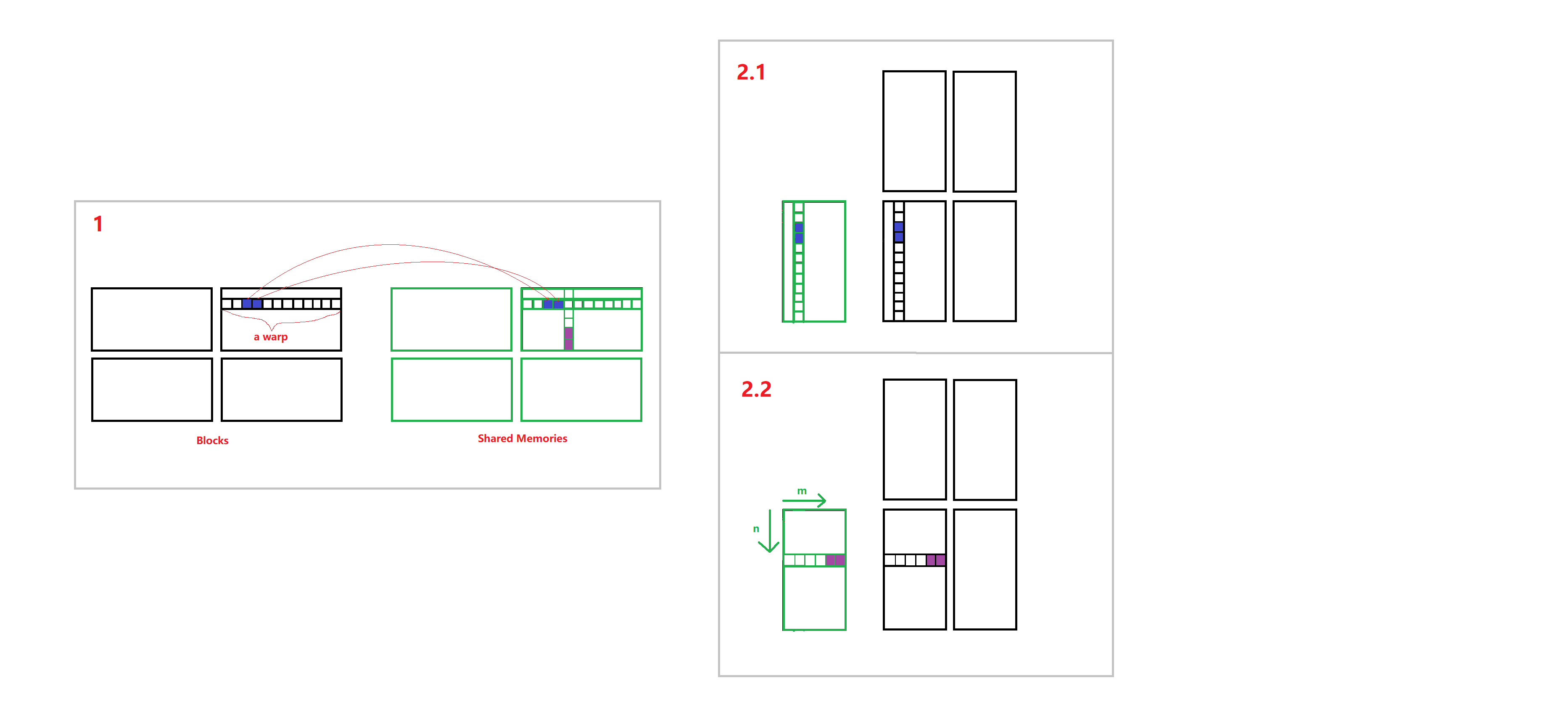常常我们使用shared memory,为了解决以下两种问题:
1)同一个全局内存既被读取,又被写入。为了避免写入覆盖,于是放shared memory里暂存,所有数据处理好后,最后一起写入全局内存。
2)避免重复读取全局内存影响性能,所以一开始把数据存到shared memory,以便之后多次读取
本文将解决第3种问题:
3)为了全局内存的合并读取和写入,提高性能。
见如下矩阵转置的例子:

第一步,如图1,本thread将矩阵中对应位置的数据写到shared memory里面对应的位置
第二步,如图2.1,本thread将shared memory中对应的数据,转移到输出矩阵的转置的位置
如果按上面方法,使用shared memory并没有解决问题: 第一步,一个warp的threads对全局内存一行读取,进行的是合并读取,没毛病。第二步,对全局内存的一列写入,是离散的读取,效率很低,这个shared memory不仅没有解决问题,还增加了额外的copy时间。
所以我们要改变第二步,见图2.2:
为了读输出矩阵的写入是行写入,我们需要在第二步的时候对shared memory的数据进行重新index。
比如,在3列4行的block(我们申请的shared memory也是3列4行)里, 第7个thread的坐标是(2,1),那么也找到shared memory的第7个位置,也就是(2,1),所以它在第一步将输入数据copy到shared memory的(2,1)位置;第二步,重新index,方法是,转置之后的shared memory 找第7个位置,也就是(2,0),所以第二步是将shared memory里(2,0)位置的数据copy到对应的输出矩阵中
代码如下:
1 | #include <iostream> |
效果:1
2
3
4
5
6
7
8
9
10
11
12
13
14
15
16$ nvcc cudaMatrixTransposeSharedMemory.cu
$ ./a.out
Original:
3 6 7 5 3 5 6 2
9 1 2 7 0 9 3 6
0 6 2 6 1 8 7 9
2 0 2 3 7 5 9 2
Transposed:
3 9 0 2
6 1 6 0
7 2 2 2
5 7 6 3
3 0 1 7
5 9 8 5
6 3 7 9
2 6 9 2